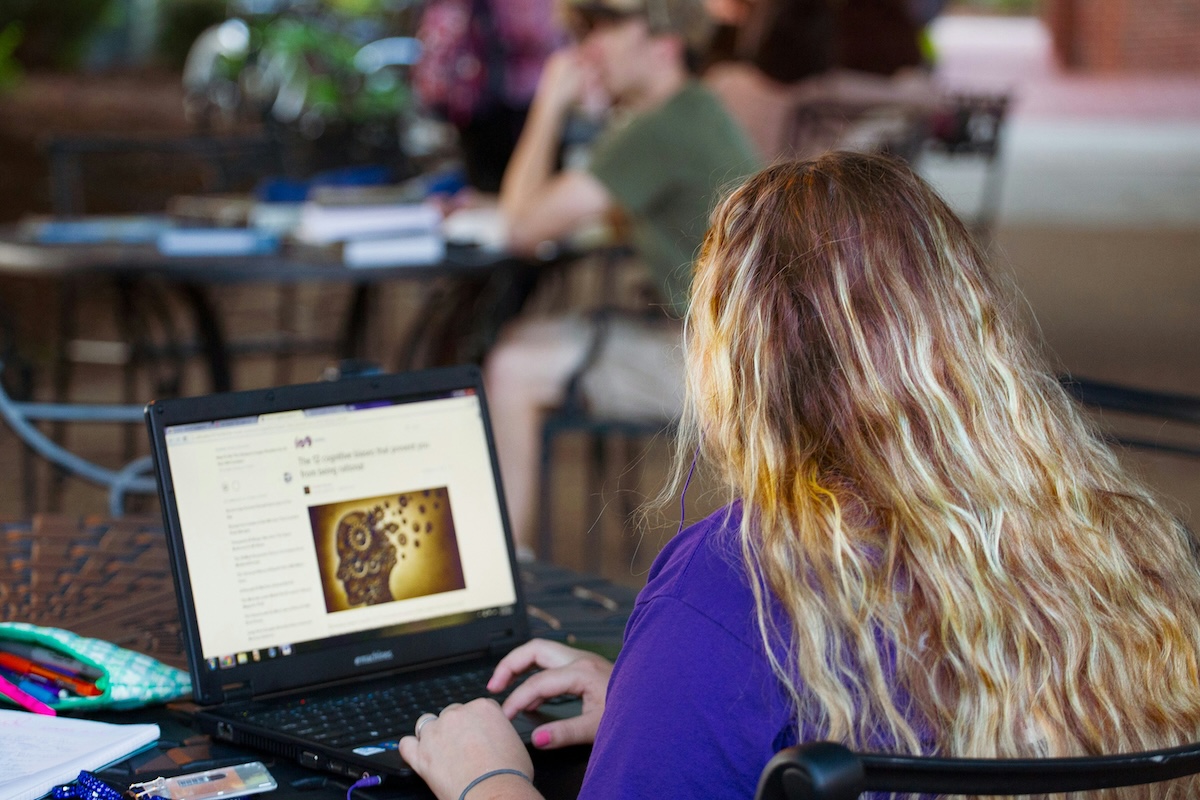
Education Without Borders: Studying from Anywhere in the World
By: Mia Clarke
Skip to Section
Article Summary
Education broke free from classrooms and now you can earn a degree from Paris while sitting in your pajamas in Peru, thanks to technology and some serious innovation.
The world of education went full digital superhero mode, smashing geographical barriers like they’re made of paper. You’ll learn how students access European universities from South American sofas, why Fulbright and Chevening scholarships now fund virtual learning, and how AI creates personalized lesson plans faster than you can say “homework.” The guide covers everything from bridging the digital divide to building global communities through virtual cultural weeks, plus the reality check about juggling time zones and verifying accreditation.
- Technology heroes include high-speed internet, Canvas, Moodle, and Zoom making real-time global classrooms possible.
- Financial barriers crumble with online courses costing less than campus versions, plus international scholarships going digital.
- Digital divide solutions include subsidized internet, community tech centers, and partnerships providing affordable devices.
- Cultural exchange happens through discussion boards, virtual events, and language buddy systems building global connections.
- Challenges include midnight lectures due to time zones and verifying accreditation to avoid worthless degrees.
Education today transcends physical boundaries, epitomizing the concept of ‘Education Without Borders,’ where connectivity and digital tools make learning accessible globally, irrespective of location. The fusion of culture, technology, and knowledge allows students to explore their passions from home, fostering global citizenship and preparing them for a diverse, tech-savvy workforce.
With the availability of online courses, virtual exchange programs, and remote internships, education is not just about physical attendance but about engaging with a worldwide network of peers and professionals, making it a current reality and a transformative experience for both students and educators.
Global Access to Education
Education is transforming, enabling you to learn from any corner of the world without being hindered by physical distances. This connectivity has made it more affordable than ever, opening doors to various financial aid and scholarships.
Breaking Physical Barriers
Imagine taking a course from a top university in Europe while sitting comfortably in your home in South America. Technology has made this possible through online learning platforms and virtual classrooms. With advancements such as:
- High-speed internet: Connecting you to courses and resources in real time
- Learning management systems (LMS): Platforms like Canvas and Moodle organize course materials in one place.
- Video conferencing tools: Zoom and Skype bring the interactive experience of a classroom to you.
These tools are breaking down the walls of traditional classrooms, offering you an education that was once inaccessible.
Affordability and Scholarships
Pursuing higher education can be costly, but the global access model is easing this burden. You can now take advantage of:
- Online courses: Often more affordable than on-campus counterparts.
- Scholarships and grants: Various international scholarships are available, including:
- Fulbright Program: For international students in the U.S.
- Chevening Scholarships: For leadership-focused individuals in the UK.
- Flexible payment options: Many institutions provide installment plans or sliding scale fees based on your income.
Through these options, the financial hurdle to accessing world-class education is becoming significantly lower for you.
Technology and Connectivity
Advancements in technology have revolutionized access to education, and initiatives to increase connectivity are bridging the knowledge divide.
Tech Advancements in Education
Technology has transformed the educational landscape, creating new learning methodologies and opportunities. High-speed internet, cloud computing, and smartphones have made it possible to access vast resources and educational programs from virtually anywhere. Interactive platforms and online tools have made learning more engaging and personalized. For instance, if you’re already in the workforce but aiming to climb the ladder, an online hotel management course might be just what you need.
E-learning platforms offer a variety of courses that fit different schedules and learning speeds, and virtual classrooms allow for real-time interaction with instructors and peers worldwide. Innovations in artificial intelligence further tailor the learning experience, providing individualized lesson plans and instant feedback on assignments.
Bridging the Digital Gap
Despite the increase in online education tools, access remains uneven, prompting efforts to bridge the digital divide so that learners in remote or economically disadvantaged areas can also access educational technology. Governments and NGOs are collaborating to provide low-cost or subsidized internet access and establish community centers equipped with essential technology. Simultaneously, educational institutions are partnering with tech companies to distribute affordable devices such as tablets and laptops, either at reduced prices or as part of financial aid, ensuring all students have the opportunity to engage with online resources regardless of their economic background.
Culture and Community Building
Engaging with diverse cultures enriches the educational experience, while collaboration cements a sense of global community.
Cross-Cultural Experiences
You’ll find that interacting with peers from different backgrounds adds a profound depth to your learning. By participating in forums and group projects, you get to exchange stories, ideas, and even recipes that transform your worldview. Here’s how this unfolds:
- Discussion Boards: Share personal anecdotes that reflect your culture.
- Cultural Weeks: Students showcase their traditions through virtual events.
- Language Exchanges: Pair up with a buddy to learn new phrases and slang.
Through these layers of exchange, you’re not just gaining knowledge; you’re weaving a rich tapestry of global narratives.
International Collaboration
When you collaborate internationally, you’re not only producing a project; you’re shaping the future. These partnerships often lead to innovations that transcend borders. Here are some bullet points on how collaboration influences your experience:
- Joint Projects: Work alongside students from various countries to solve real-world problems.
- Virtual Workspaces: Use tools like Slack or Trello to coordinate efforts seamlessly.
- Research Opportunities: Engage in studies that require diverse perspectives for richer outcomes.
Through these international efforts, you’re creating connections that might one day change the world. You’re not just a student; you’re a global citizen building bridges across continents.
Challenges and Considerations
Embarking on an international online study program can be incredibly rewarding, but it comes with its own set of obstacles. Consider the hurdles of syncing schedules across the globe and ensuring your education meets global standards.
Navigating Time Zones
When you’re taking courses from institutions in different parts of the world, time zones can be a tricky affair. You might find yourself:
- Attending live lectures at unconventional hours, sometimes late at night or early in the morning.
- Participating in group projects with peers across multiple time zones, requiring careful planning and communication.
Pro Tip: Use digital tools like world clock planners and shared calendars to keep track of deadlines and meetings.
Quality Assurance and Accreditation
The value of your education largely hinges on its recognition. Here’s what you should look out for:
- Accreditation: Check if the institution is accredited and recognized by the appropriate educational authorities.
- Reputation: Research the institution’s reputation within the academic and professional communities.
Remember, the credibility of your degree can influence your future employment opportunities, so take the time to verify these details thoroughly.
Wrapping Up
The future of education is marked by an unprecedented level of access and interconnectivity, allowing students around the world to participate in a global learning environment. Technological advancements not only dissolve geographical barriers but also enhance the learning experience through innovative tools and platforms. This evolution fosters a dynamic educational landscape where cultural exchange and international collaboration enrich students’ perspectives and competencies. However, challenges such as ensuring equitable access and navigating diverse educational standards underline the importance of continued efforts to make global education inclusive and universally valued.
About the Author
Mia Clarke brings her knowledge of the hospitality industry to The Long Reach’s content team. sharing her insights on the latest trends. When not writing, she’s busy exploring new destinations—experiences she uses to fuel her inspiring content creation.
Information published on this website and across our networks can change over time. Stories and recommendations reflect the subjective opinions of our writers. You should consult multiple sources to ensure you have the most current, safe, and correct details for your own research and plans.
Frayed Passport is a participant in the Amazon Associates Program, an affiliate advertising program designed to provide a means for sites to earn advertising fees by advertising and linking to Amazon.com. We also may share links to other affiliates and sponsors in articles across our website.




